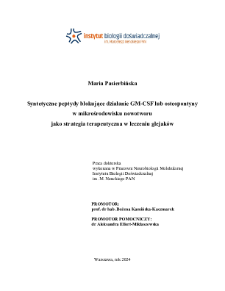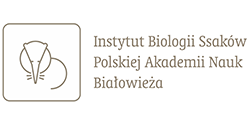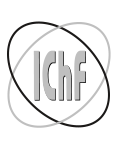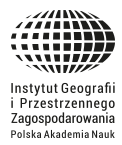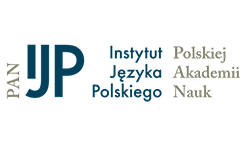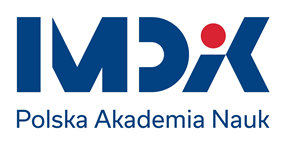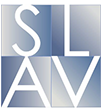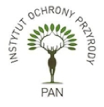- Search in all Repository
- Literature and maps
- Archeology
- Mills database
- Natural sciences
Advanced search
Advanced search
Advanced search
Advanced search
Advanced search

Object
Title: Syntetyczne peptydy blokujące działanie GM-CSF lub osteopontyny w mikrośrodowisku nowotworu jako strategia terapeutyczna w leczeniu glejaków : praca doktorska
Twórca instytucjonalny:
Instytut Biologii Doświadczalnej im. Marcelego Nenckiego PAN
Współtwórca:
Kamińska-Kaczmarek, Bożena (1961– ) : Supervisor ; Ellert-Miklaszewska, Aleksandra : Assistant supervisor
Wydawca:
Instytut Biologii Doświadczalnej im. Marcelego Nenckiego PAN
Miejsce wydania:
Opis:
[6], 95 pages : illustrations ; 30 cm ; Bibliography ; Summary in English
Uzyskany tytuł:
Dyscyplina :
Instytucja nadająca tytuł:
Nencki Institute of Experimental Biology PAS ; degree obtained in 2024
Typ obiektu:
Abstrakt:
Malignant gliomas are the most common primary malignant brain tumors in adults. The results of experimental and clinical studies showed that these tumors are infiltrated by microglia (myeloid cells present in the brain) and bone marrow derived monocytes/macrophages. Instead of initiating an anti-tumor response, these cells support tumor growth by increasing migration, invasion and proliferation of glioma cells. In the Laboratory of Molecular Neurobiology, granulocyte macrophage colony growth (GM-CSF) and osteopontin (SPP1) secreted by glioma cells were identified as crucial players in inducing the reprogramming of myeloid cells to the pro-tumor phenotype. The aim of the doctoral thesis was to identify synthetic peptides that block the interactions of GM-CSF or SPP1 with their respective receptors on myeloid cells. Peptide libraries that potentially bind GM-CSF or SPP1 were designed, and 78 peptides were synthesized. Binding specificity was determined with peptide arrays and enzyme-linked immunosorbent assay (ELISA). Ten peptides binding GM-CSF and 14 peptides binding SPP1 were identified, and their potential toxicity against BV2 mouse microglia and human U87 MG glioma cells was analyzed. Both murine BV2 and human SV40 microglial cells stimulated the invasion of various human glioma cells in matrigel matrix invasion assay. Based on the ability of peptides to inhibit glioma cell invasiveness, the two best-performing peptides were selected: G7 (for GM-CSF) and I49 (for SPP1). The G7 peptide binding to GM-CSFR receptor was verified using surface plasmon resonance and the Ligand Tracer apparatus, which assesses the interaction of GM-CSF with the receptor located on the cell surface. Treatment with G7 changed the transcriptional profile of glioma-activated microglia cells. The antitumor effect of the peptides, administered together with implanted glioma cells (single application) or using osmotic pumps (continuous delivery), was assessed in a mouse model of human glioma. The tumor size was measured by intravital tumor fluorescence measurement (with Xtreme imaging system) or using magnetic resonance imaging (MRI). Furthermore, silencing of SPP1 expression in U87 MG glioma cells reduced tumor growth in vivo and changed metabolite concentrations as assessed using H1MRS magnetic resonance spectroscopy. Both peptides are subjects to patent applications.
Szczegółowy typ zasobu:
Identyfikator zasobu:
Źródło:
Język:
Język streszczenia:
Prawa:
Zasady wykorzystania:
Copyright-protected material. May be used within the limits of statutory user freedoms
Właściciel praw autorskich:
Publication made available with the written permission of the author
Digitalizacja:
Nencki Institute of Experimental Biology of the Polish Academy of Sciences
Lokalizacja oryginału:
Library of the Nencki Institute of Experimental Biology PAS
Dostęp:
Object collections:
- Repozytorium Cyfrowe Instytutów Naukowych > Kolekcje Partnerów > Instytut Biologii Doświadczalnej PAN
- Repozytorium Cyfrowe Instytutów Naukowych > Kolekcje Partnerów > Instytut Biologii Doświadczalnej PAN > Prace dyplomowe
- Repozytorium Cyfrowe Instytutów Naukowych > Kolekcje Partnerów > Instytut Biologii Doświadczalnej PAN > Prace dyplomowe > Prace doktorskie
- Repozytorium Cyfrowe Instytutów Naukowych > Piśmiennictwo
- Repozytorium Cyfrowe Instytutów Naukowych > Piśmiennictwo > Prace dyplomowe
Last modified:
Dec 13, 2024
In our library since:
Oct 28, 2024
Number of object content downloads / hits:
2
All available object's versions:
https://rcin.org.pl./publication/279271

 INSTYTUT ARCHEOLOGII I ETNOLOGII POLSKIEJ AKADEMII NAUK
INSTYTUT ARCHEOLOGII I ETNOLOGII POLSKIEJ AKADEMII NAUK
 INSTYTUT BADAŃ LITERACKICH POLSKIEJ AKADEMII NAUK
INSTYTUT BADAŃ LITERACKICH POLSKIEJ AKADEMII NAUK
 INSTYTUT BADAWCZY LEŚNICTWA
INSTYTUT BADAWCZY LEŚNICTWA
 INSTYTUT BIOLOGII DOŚWIADCZALNEJ IM. MARCELEGO NENCKIEGO POLSKIEJ AKADEMII NAUK
INSTYTUT BIOLOGII DOŚWIADCZALNEJ IM. MARCELEGO NENCKIEGO POLSKIEJ AKADEMII NAUK
 INSTYTUT BIOLOGII SSAKÓW POLSKIEJ AKADEMII NAUK
INSTYTUT BIOLOGII SSAKÓW POLSKIEJ AKADEMII NAUK
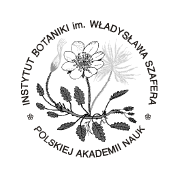 INSTYTUT CHEMII FIZYCZNEJ PAN
INSTYTUT CHEMII FIZYCZNEJ PAN
 INSTYTUT CHEMII ORGANICZNEJ PAN
INSTYTUT CHEMII ORGANICZNEJ PAN
 INSTYTUT FILOZOFII I SOCJOLOGII PAN
INSTYTUT FILOZOFII I SOCJOLOGII PAN
 INSTYTUT GEOGRAFII I PRZESTRZENNEGO ZAGOSPODAROWANIA PAN
INSTYTUT GEOGRAFII I PRZESTRZENNEGO ZAGOSPODAROWANIA PAN
 INSTYTUT HISTORII im. TADEUSZA MANTEUFFLA POLSKIEJ AKADEMII NAUK
INSTYTUT HISTORII im. TADEUSZA MANTEUFFLA POLSKIEJ AKADEMII NAUK
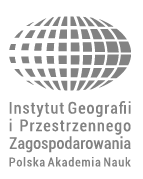 INSTYTUT JĘZYKA POLSKIEGO POLSKIEJ AKADEMII NAUK
INSTYTUT JĘZYKA POLSKIEGO POLSKIEJ AKADEMII NAUK
 INSTYTUT MATEMATYCZNY PAN
INSTYTUT MATEMATYCZNY PAN
 INSTYTUT MEDYCYNY DOŚWIADCZALNEJ I KLINICZNEJ IM.MIROSŁAWA MOSSAKOWSKIEGO POLSKIEJ AKADEMII NAUK
INSTYTUT MEDYCYNY DOŚWIADCZALNEJ I KLINICZNEJ IM.MIROSŁAWA MOSSAKOWSKIEGO POLSKIEJ AKADEMII NAUK
 INSTYTUT PODSTAWOWYCH PROBLEMÓW TECHNIKI PAN
INSTYTUT PODSTAWOWYCH PROBLEMÓW TECHNIKI PAN
 INSTYTUT SLAWISTYKI PAN
INSTYTUT SLAWISTYKI PAN
 SIEĆ BADAWCZA ŁUKASIEWICZ - INSTYTUT TECHNOLOGII MATERIAŁÓW ELEKTRONICZNYCH
SIEĆ BADAWCZA ŁUKASIEWICZ - INSTYTUT TECHNOLOGII MATERIAŁÓW ELEKTRONICZNYCH
 MUZEUM I INSTYTUT ZOOLOGII POLSKIEJ AKADEMII NAUK
MUZEUM I INSTYTUT ZOOLOGII POLSKIEJ AKADEMII NAUK
 INSTYTUT BADAŃ SYSTEMOWYCH PAN
INSTYTUT BADAŃ SYSTEMOWYCH PAN
 INSTYTUT BOTANIKI IM. WŁADYSŁAWA SZAFERA POLSKIEJ AKADEMII NAUK
INSTYTUT BOTANIKI IM. WŁADYSŁAWA SZAFERA POLSKIEJ AKADEMII NAUK
